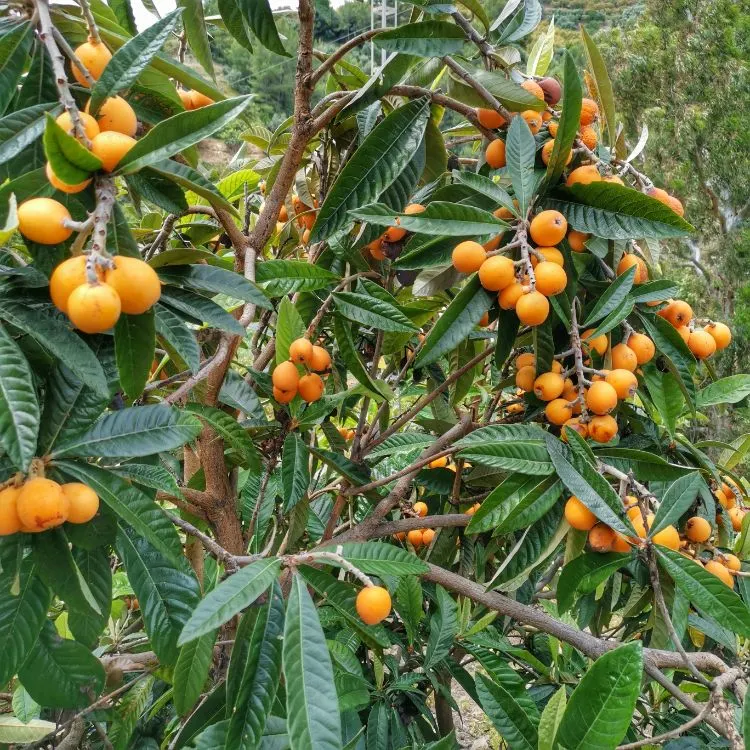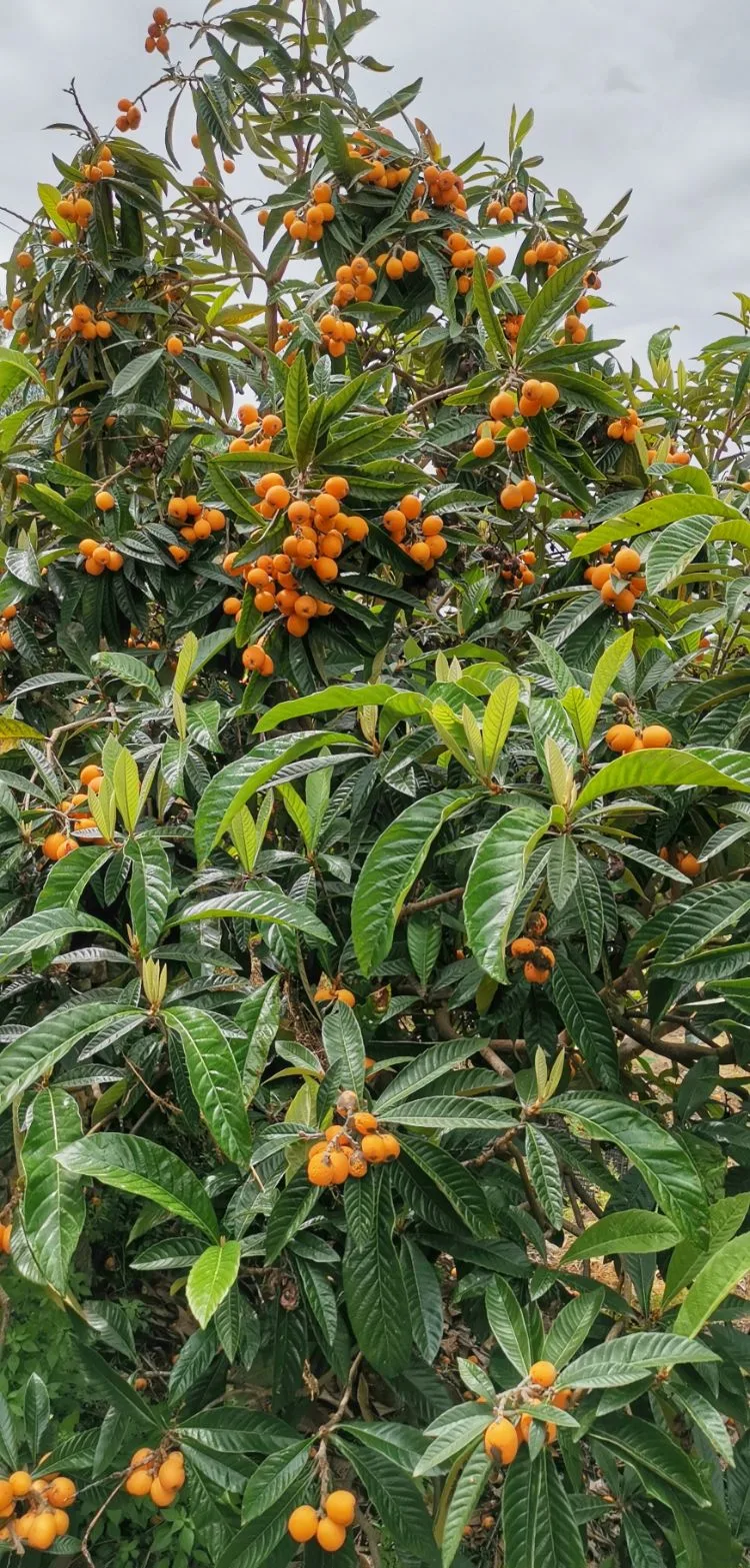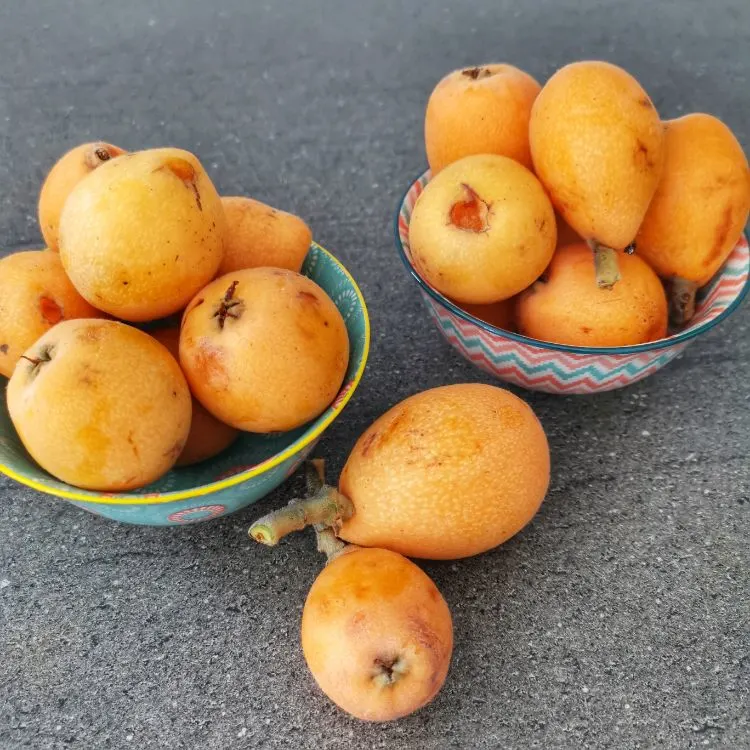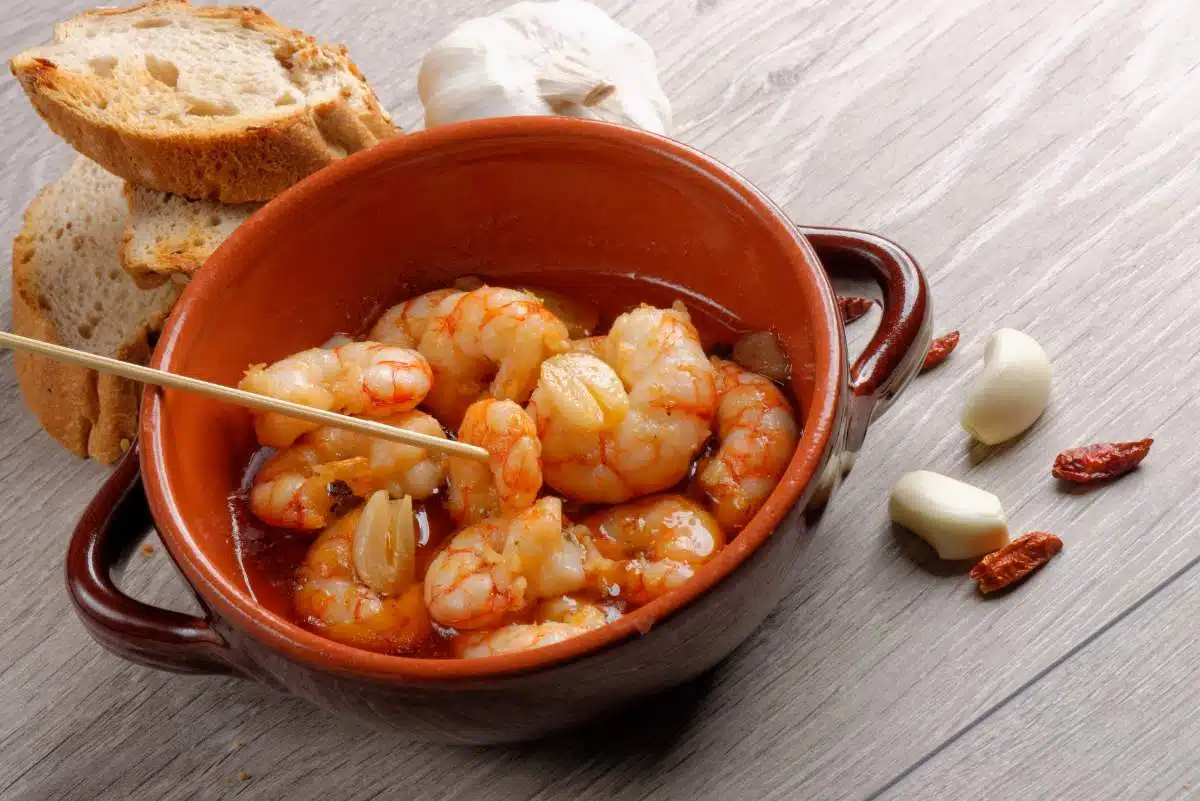The loquat fruit, also known as the nispero fruit, is spring’s delightful gift to Spain. Learn more about this orange Asian fruit.
You don’t have to go to China, Japan, or look for an Asian store in your vicinity to have a taste of that golden orange fruit that many Spanish foodies can’t help gushing about.
It is the delightful loquat fruit, a staple sighting in most areas in Spain when spring has just begun.
What is a Loquat?

A loquat has two other common names: Japanese medlar and nispero. It is generally associated with pears and apples, all being part of the rose family.
This fruit species originally came from Southeast China and was introduced in Japan, where its cultivation flourished.
Other areas that planted loquats way back include Hawaii, California, Israel, Brazil, and Spain.
Talking about Spain in particular: the loquat arrived in the country more than 2000 years ago.
Because its location is good for loquat trees to thrive, Spain is the main supplier of loquats in all of Europe.
There are two types of loquat varieties in Spain:
1. Argelino – The Argelino loquat is the sweeter variety. It is harvested earlier during the loquat season. This type of loquat is perfect for eating raw.
2. Tanaka – The Tanaka loquat proves to be firmer and less acidic than Argelino. It is perfect for baking and cooking.

What does a loquat taste like?
Loquats are delicious. They are sweet but, at the same time, slightly sour.
The loquat fruit is not only delicious to eat but also beneficial for the body.
It contains carotenoids which are a good source of Vitamin A. Aside from that, loquat is also packed with fiber, calcium, and potassium.
Another important component of the nispero fruit comes in the form of hydroxycinnamic acids. These are known to combat heart diseases and even cancer.
You can enjoy loquats during the spring season.
In Spain, they look forward to seeing that small yellow fruit with seeds dangling from its tree because it means that spring has come.
Nispero/ Loquat Tree
The tree of a loquat fruit is small enough to call it a relatively large shrub.
It reaches about 20 to 30 feet of height, although the most common loquat trees measure only ten feet.
The nispero or loquat tree, when grafted, bears fruit after two to three years.
If the tree comes from a seedling, the waiting time takes about eight to ten years. It likes to have full access to sunlight and a bit of shade.
Loquat fruits must be ripe from the trees before you harvest them.
You will know that the fruit is ready to be picked when it turns golden orange in color and is a bit soft when gently squeezed.
How to eat Loquat?

Wash the loquat fruit in running tap water. Scrub the skin gently with your hands or with a vegetable brush.
Afterward, you can eat the loquat as is – ripe and raw.
There is no need to peel the skin because it is edible; remove the stem and seeds.
You can also use the loquat fruit for baking. Try it just like how you would use apples in tarts, pies, and even cakes.
You can also use the fruit in savory dishes. Its flavor profile works best with chicken and duck specialties.
Is it nispero season?
If you find your loquat tree-bearing fruit that is too many to consume by your household, you can turn them into a fruit jam.
Save the seeds – you might want to make your own nespolino liqueur!




Leave a Reply